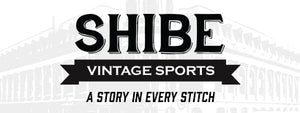April 13, 2011

With a soccer-specific stadium in beautiful Chester, an average attendance that the playoff-bound Sixers don’t rival even in an arena with 2,000 more seats, and a team atop the table early in the 2011 season, soccer fever is running high in Philadelphia. While most young fans think that Philly’s soccer history goes only as deep as the Zolos, they’re wrong. And while some of the older guys might think we started in the 70s with the NASL’s Philadelphia Atoms and Fury, they’re wrong too. Though it seems like we are new kids on the block when it comes to the beautiful game, Philly was playing professional soccer…err football when Grover Cleveland was in office.
Turn back the clock to 1894. The owners of six teams in the National League of Professional Baseball Clubs (better known simply as the National League) get together to do what sport franchise owners do best: figure out new ways to make money. They decide to take advantage of their stadiums, which went unused during the winter months and capitalize on a sport with a relatively small, but growing fan base: association (as opposed to gridiron) football. And so, on June 19, 1894 the American League of Professional Football was born.

While the owners were publicly confident about the ALPF, their actions made it clear that the ALPF was more about extra revenue and marketing baseball than it was about building soccer in this country. For one, there were no “soccer people” in the ownership of the ALPF. In fact, Arthur Irwin, then manager of the Phillies was named the league’s president. Secondly, all of the six teams that made up the league took the names of the baseball teams in their respective cities: the Brooklyn Bridegrooms, the Baltimore Orioles, the Boston Beaneaters, the New York Giants, the Washington Senators, and your Philadelphia Phillies. And thirdly, only Baltimore hired an actual soccer coach to manage the team, the rest used a combination of their baseball managers and front office members.
Not too surprisingly, neither the Phillies nor the league flourished. Despite charging only $0.25 per ticket (half of the cost of a baseball game at the time), the team drew about 500 fans per game at Philadelphia Base Ball Grounds (later rebuilt and re-named the Baker Bowl after a fire). In a failed attempt to attract fans, the team also had a few of the NL Phillies play for the ALPF team. One of those crossover players was Sam Thompson, a baseball Hall of Famer who hit .407 with 13 HR and 141 RBI in 99 games in the 1894 season. The schedule of the games also severely limited attendance as games were played on weekday afternoons when the immigrant working class was still at work. With that scheduling, the ALPF missed out on a large segment of the population who was actually familiar with the sport.
The Inquirer’s reporting on the Phillies doesn’t disappoint. The sport itself is described as “decidedly interesting” even though it is “robbed of the Rubgy roughness.” The Inquirer noted that “all of the players are of either English or Irish extraction, and some have been imported especially to play in the new league, except Charley Reilly the Phillies’ third baseman, who is new to the game, but who promises to become one of the best players.” I’m not too sure the Daily News would be so kind to Placido Polanco if he tried soccer on for size.
By all accounts, the ALPF Phillies were the original Broad Street Bullies. In the Phillies’ first game against New York, a “regular wrestling and slugging match ensued” after a NY player took some liberties with the Phillies’ goalkeeper. Later in a game against the Washington Senators, “Reilly and Rock were ejected from the field for wrestling.”
They may have been tough, but they weren’t very good. The Phillies finished 2-7 and only one spot ahead of the last place Senators.
The ALPF itself didn’t fare much better than the Phillies. Just 18 days into the season, the season was cancelled, most likely because it was not economically viable. And although the owners originally planned on continuing the league in 1895, that never occurred and the ALPF disappeared for good.
A league that spanned less than 3 weeks almost 117 years ago can’t be considered a success, but it was America’s first professional soccer league and Philadelphia was right in the thick of it.
Credit to The Philly Soccer Page, which contains a host of soccer related pieces. Its comprehensive two-part series on the ALPF served as a source for this article.

